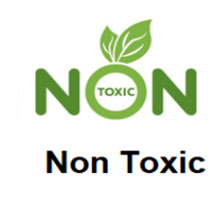Turf Introduction
Maintenance Guidelines for Artificial Turf
2024-06-14
Maintenance Guidelines for Artificial Turf
Artificial turf, as a durable and low-maintenance alternative to natural grass, still requires regular care to maintain its appearance and lifespan. Here are some key maintenance steps to follow for keeping your artificial turf looking its best.
1. Routine Cleaning
Regular cleaning is essential for removing dirt, dust, and other debris that can accumulate on the surface of artificial turf. Use a soft-bristled brush or broom to gently sweep the turf, removing any loose dirt or debris. Avoid using harsh chemicals or detergents, as they can damage the turf fibers.
2. Debris Removal
Debris removal is a crucial part of artificial turf maintenance. Check the turf regularly for leaves, sticks, and other debris that may have blown or fallen onto the surface. Remove these items promptly to prevent them from causing damage or discoloration to the turf.
3. Mowing and Edging (Not Applicable for Artificial Turf, but Edge Trimming May Be Required)
Although artificial turf does not require mowing like natural grass, it may be necessary to trim any overhanging edges or uneven areas. Use a sharp knife or scissors to trim any excess turf, ensuring a clean and uniform appearance.
4. Drying after Rain
After a rainy day, it’s important to allow the artificial turf to dry naturally. Avoid walking or playing on the turf until it is completely dry, as this can compress the fibers and affect its resilience. Ensure good drainage by keeping the turf area well-graded and free of obstructions that could prevent water from draining away.
5. Decontamination
Occasionally, it may be necessary to decontaminate the artificial turf to remove stains or odors. Use a mild detergent or turf-specific cleaner diluted in water and apply it evenly to the surface with a spray bottle or soft cloth. Avoid using bleach or other harsh chemicals, which can damage the turf fibers. Rinse thoroughly with clean water and allow the turf to dry completely.
6. Checking for Wear
Inspect the artificial turf regularly for signs of wear or damage. Look for yarn breakage, tears, or discoloration that may indicate a need for repairs or replacement. Address any issues promptly to prevent them from becoming worse and affecting the overall performance of the turf.
7. Periodic Inspection
In addition to routine cleaning and debris removal, it’s recommended to conduct a periodic inspection of the artificial turf. This includes checking the backing material for signs of weakness or damage, ensuring that seams are secure and free of tears, and assessing the overall condition of the turf. If any issues are identified, take appropriate action to repair or replace damaged parts to maintain the integrity and longevity of the turf.
By following these maintenance guidelines, you can ensure that your artificial turf remains in excellent condition, providing a durable and attractive surface for years to come. Regular care and attention will help prolong the lifespan of your turf and keep it looking its best.









